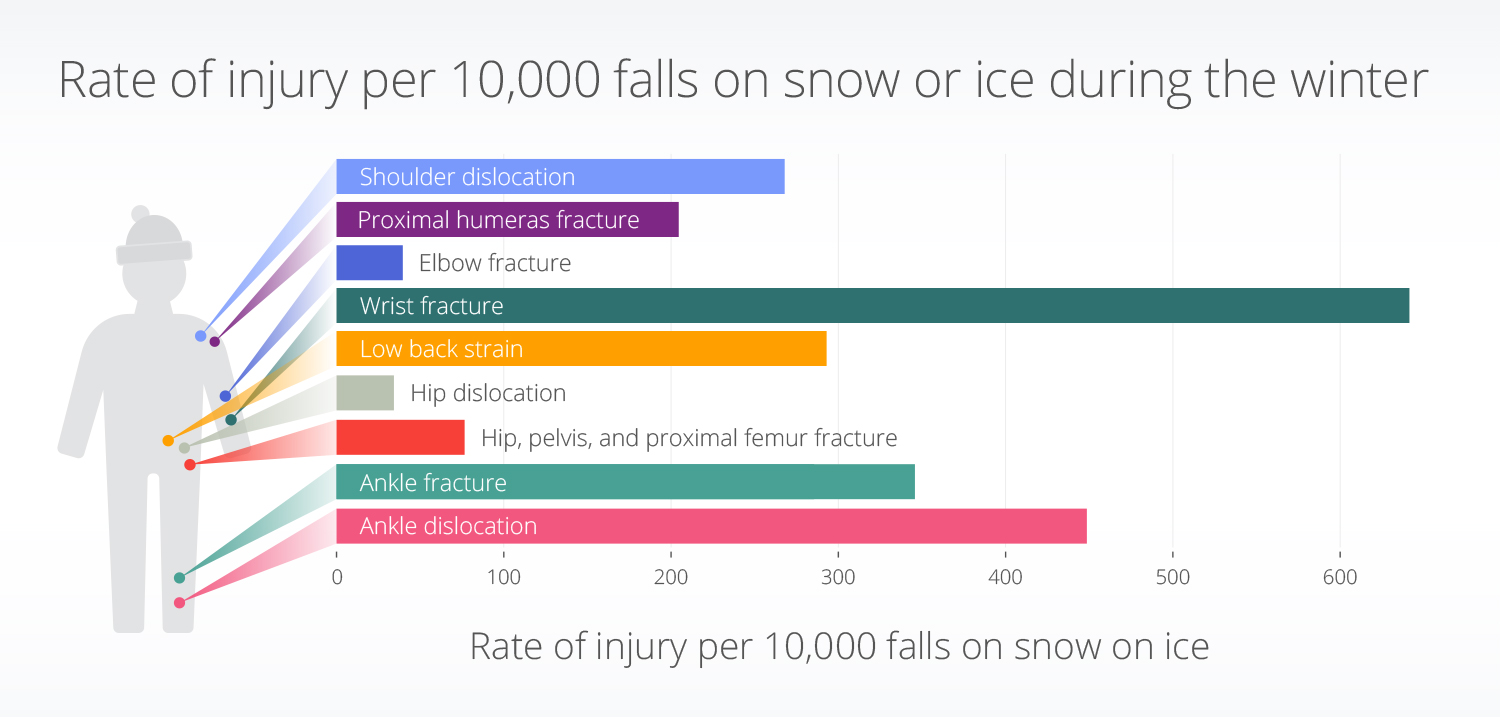Trends in winter falls and associated injuries
Sign up for a free account to read full studies, with full transparency into methods and results, and experience the power of Truveta Studio
Authors: Truveta Research ⊕Truveta, Inc, Bellevue, WA
Date: February 5, 2024
Abstract
Background
One of the most common winter injuries is falling on ice and/or snow. Falls often occur in the morning on days with high precipitation. Falls and their related injuries increase staffing needs, healthcare costs, and are associated with increased use of prescribed pain medications. The objective of this study was to describe how often falls or slips on the ice or snow occur in the winter and identify if the incidence of these injuries varies by states with more and less wintry weather.
Methods
We identified patients with emergency department visits during the astrological and meteorological winter months (December to March) from December 2019 to March 2023. Within this population, we identified the population in which the encounter was associated with a fall on ice or snow as defined by ICD10 codes (These falls were not related to sports such as skiing, snowboarding, ice skating, or other winter-related sports). We calculated the rate of falls per 10,000 emergency department visits. We describe the differences in rates by age groups and regions with more or less wintry weather.
We also identified people within this population whose falls were associated with subsequent injuries to specific body parts. We calculated the rate of each injury per 10,000 falls seen in the emergency department.
Results
We included 5,776,772 emergency department visits during winter months, of which 7,577 were associated with falls on snow or ice. Overall, there were 13.1 emergency department visits for falls on snow or ice per 10,000 emergency department visits during wintery months. Patients over age 45 accounted for 54.3% of the population.
There was a 3x higher rate of falls in areas with more wintry weather compared to those with milder weather. We found that 22.5% of the falls on snow or ice were associated with a strain, sprain, fracture or dislocation. Wrist fractures were the most common associated injury (641.4 per 10,000 falls on snow or ice seen in the emergency department).
Discussion
Between December 2019 and December 2023, we found that for every 10,000 emergency department visits from December to March, there were more than 13 emergency department visits due to falls on snow or ice. Although this may be a small number, over 20% of these falls were associated with a strain, sprain, fracture, or dislocation, highlighting the seriousness of these injuries. As expected, we found a much higher rate of falls in regions with freezing winter temperatures compared to those with mild winter temperatures. We also found higher rates of injuries to the wrist than other body parts, likely suggesting people were trying to catch themselves.
In general, falls on the snow and ice can be dangerous – people should prepare for potentially hazardous weather conditions to avoid falling by wearing sturdy shoes, salting or clearing outdoor surfaces, and knowing techniques to reduce injury in case of a fall.

